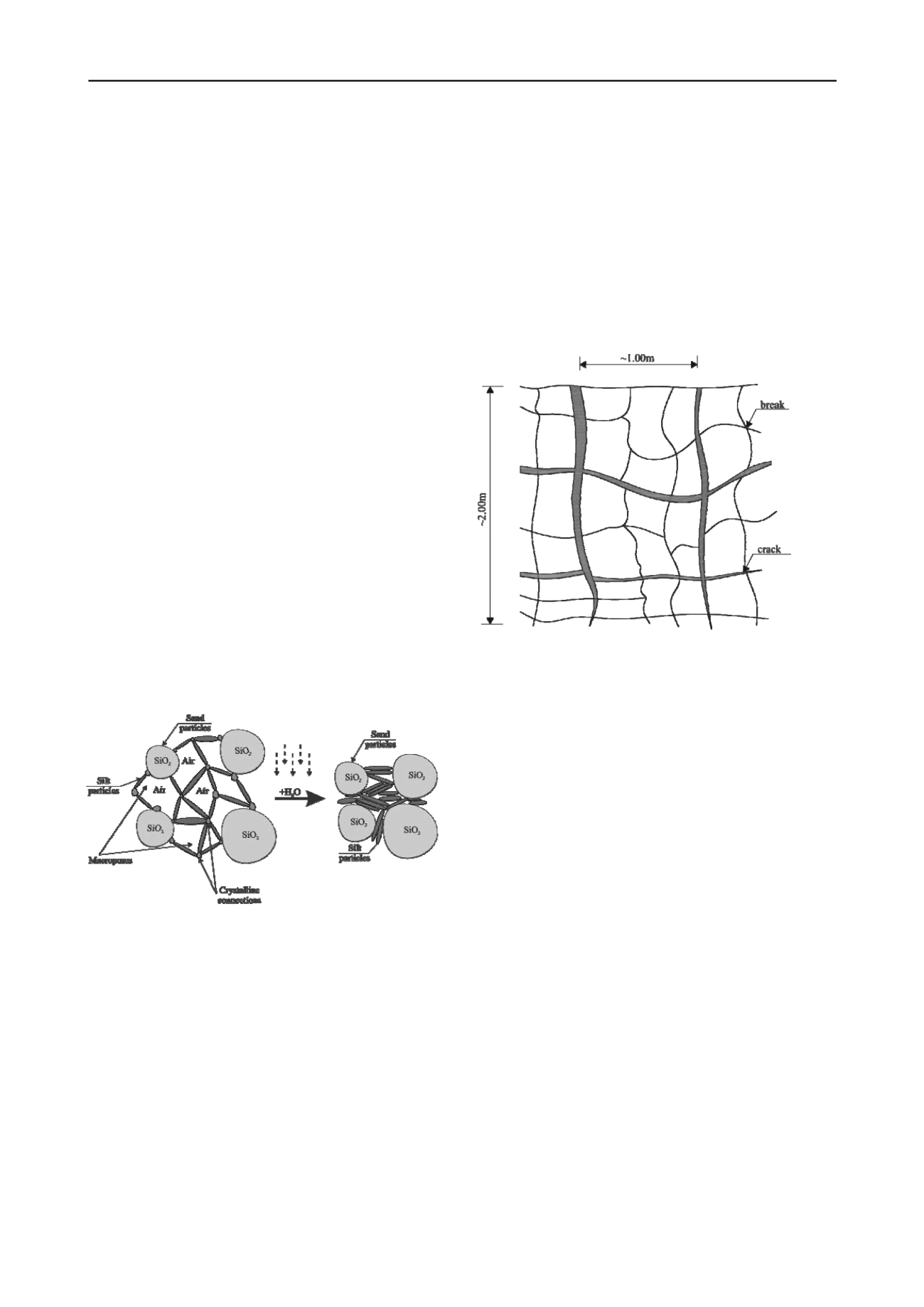
2426
Proceedings of the 18
th
International Conference on Soil Mechanics and Geotechnical Engineering, Paris 2013
The case study refers to the problems that can occur with an
improved foundation soil. The method used for improvement is
soil replacing (soil cushion).
3
CASE STUDY
Within the areas with difficult foundation soils, Iaşi City is the
largest urban settlement located in the eastern part of Romania.
The city lies at the contact between Jijia Meadow and the
Moldavian Plateau. The landscape is varied, forming a region
consisting of eroded hills crossed by Bahlui plateau.
3.1
Soil types in the studied area
Studies performed over the last decades into the existing
terraces of the region show that almost 70% from the current
area of the city have medium and low suitability for
construction purpose, this reason being more or less a natural
barrier for city expansion. Theoretical and practical solutions
offered for solving the issues caused by these types of soils
present a special interest in the current context (Vieru 2010).
Among these types of soils there are two specific categories:
loess and expansive soils.
The different types of soils existing in the studied area have
either a normal behaviour under loads, or an atypical one.
Therefore, upper and medium terraces consist of a
succession of coarser sediments at the bottom followed by a
loess soil sensitive to wetting. Loess layer is yellow-brown with
variable thickness from 8.00 m to 15.00 m lying in the highest
areas of the city. Loess deposits usually consist of silty clay and
clayey silt.
The loess of Iaşi region has medium plasticity with the liquid
limit LL = 30÷50%. Grain-size distribution is: 25÷29% clay,
43÷47% silt and 24÷32% sand. Regarding the uniformity
coefficient, the loess of Iaşi City is considered to have a good
uniformity (Ciornei & Răileanu 2000).
Figure 1. Structural rearrangement for collapsible soils
Bahlui Meadow is characterized as a mixture of sand and
gravel layers at the base of the stratification, followed by a layer
of fat swelling and shrinking clay. The sand layer has a
thickness of almost 4.00 m and the clay is between 5.00 m and
6.00 m. This clay is actually the foundation soil from the area,
requiring good knowledge of soil characteristics.
As far as the soil properties are concerned, Bahlui clay falls
within the category of high swelling and shrinking soils.
Climatic conditions of the area, with temperatures decreasing in
the summer with 10ºC...20ºC from day to night and heavy
rainfall, lead to changes in soil volume. To avoid foundation
deterioration the minimum foundation depth has been set at -
2.00 m, as deep as the effects of seasonal variations in moisture
content and temperature may not be felt (NE 001-96 1996).
Other factors influencing the volume variation are:
- soil activity – volume variation is influenced by molecular
and electro-molecular phenomena reflected by adhesive and
capillary water, their size depending on the mineralogical nature
of the particles making up the clay fraction and the nature of the
absorbed ions;
- hydro-geological conditions – groundwater is present both
through deep under pressure aquifers and also through free flow
ones. Deep layers have a high mineralization, being intercepted
only by drilling. They have an ascending nature, sometimes an
artesian one. Shallow drillings revealed the presence of captive
water with low mineralization, which can be used locally;
- layer thickness – the thicker the layer is, the bigger its
swelling;
- moisturized area – if the wet surface under an existing
building is insignificant, the deformations increase and the
probability of deterioration grows (Alupoae et al. 2011).
Figure 2. Contraction breaks and cracks
3.2
On site situation
The case study follows a residential area placed on one of the
hills in Iaşi City, Romania. The increase of water content inside
the foundation soil determined a differential settlement and the
buildings placed on site were switched from their initial vertical
position.
3.2.1
Data regarding the constructions from the studied area
The constructions were built during two different time frames:
Stage 1 – between 1994 and 1998, consists of a two
section building 22.0 x 12.0 meters (Section I and
Section II), has a total ground surface of 530 m
2
, a
structure made of reinforced concrete frames placed on
network of foundation beams. The foundation rests on a
soil cushion, 1.0 meter thick. In 1998 the foundation
system was checked and the results showed that the soil
cushion placed under the foundation had a degree of
compaction of 95.15%. Thus it can be stated that the
operations of soil improvement using mechanical means
were correctly carried out. On site, a layer of loess,
sensitive to wetting, was intercepted in drillings up to
9.0 meters from the ground surface. Under the soil
cushion the thickness of the loess layer is about 5.0 ÷
6.0 meters.
Stage 2 – the construction of Section III started in 2001,
with a built area of about 850 m
2
and a structure and
height similar to the initial sections. This section is not
entirely finished and the main problem is the fact that no
systematization works are carried out. Also, the systems
of rainwater collection and disposal are not finished.
Because of this, in 2010 a movement was observed.
After the initial observations, measures have been taken to
analyze the technical condition of the building and to establish
the necessary actions to ensure a proper exploitation for the
constructions.


